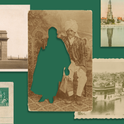What’s happiness worth? $1.5 trillion, according to McKinsey. The consulting firm says the “wellness market”—combining consumer spending on health, fitness, nutrition, appearance, sleep and mindfulness—is growing by 5–10 per cent annually. The pursuit of happiness used to be a personal struggle to find self-fulfilment and meaning, the elusive “good life” pondered by philosophers and poets. But in the last two decades, happiness has gone public, fuelling a lucrative global industry.
On 10th January, voters went to the polls in Bhutan, where “Gross National Happiness” (GNH) takes precedence over Gross National Product (GDP). The story of public happiness in the 21st century began when the Himalayan country marked its transition to democracy in 2008 by enshrining happiness as the first principle of state policy in the constitution.
In 2011, the United Nations followed suit, adopting resolution 65/309 (citing Bhutan’s example), urging member states to recognise “the importance of the pursuit of happiness and well-being in development with a view to guiding their public policies.”
The following year, the UN launched the annual World Happiness Report and celebrated the first International Day of Happiness (20th March). The Happiness Research Institute was founded in Copenhagen in 2013 to promote the “science of well-being”. In 2017, an interdisciplinary group of academics formed the Global Happiness Council “to encourage advancement of the causes of happiness”, while the Wellbeing Research Centre was founded at Oxford in 2019 “to advance our collective understanding of human wellbeing.”
A perpetual stream of popular and academic books demonstrates an unslakable thirst and evergreen market for insight into what happiness is and how to get it. To name just a few prominent examples from 2023: Oprah Winfrey teamed up with Arthur Brooks—the former head of the American Enterprise Institute—to instruct readers how to Build the Life You Want: The Art and Science of Getting Happier. Centenarian Gladys McGarey published The Well-Lived Life: A 102-Year-Old Doctor’s Six Secrets to Health and Happiness at Every Age. Psychiatrist Robert Waldinger and psychologist Marc Schulz’s book The Good Life, based on “the world’s longest study on happiness” conducted by Harvard University since 1938, proclaimed “social fitness”—healthy, balanced and positive relationships—as the key to a happier, longer life.
Of course, the pursuit of happiness and the self-help books promising to help us find it are nothing new. Confucius said happiness was key to the “good life” and Aristotle held eudaimonia —“happiness” or “flourishing”—to be the highest end of human existence. Philosophers have been arguing about happiness for millennia. Aristotle’s focus on rational virtue was challenged by the Epicureans (happiness through pleasure) and the Stoics (happiness through moral rectitude).
Islamic philosophers, developing the Greek tradition, drew distinctions between earthly and heavenly saʿādah (“happiness” or “felicity”) in works such as al-Fārābī’s Tartīb al-saʿādah (The Order of Felicity) and al-Ghazālī’s Kīmiyāt al-saʿādah (The Alchemy of Felicity).
Happiness is now a metric, a key performance indicator, a ludicrously profitable commodity: the oil and gas of the soul
In the Renaissance, the medieval Christian emphasis on happiness as a journey towards God gave way to more secular concerns and anticipated Schulz and Waldinger's “social fitness”. Aspiring early modern princes, courtiers, divines, and scholars could draw on a vast stock of self-help literature to negotiate political and social relationships, like Baldassare Castiglione’s The Book of the Courtier (1528) and Niccolò Machiavelli’s The Prince (1532).
In his Essay Concerning Human Understanding (1689), John Locke wrote that “the highest perfection of intellectual nature lies in a careful and constant pursuit of true and solid happiness.” The idea was pinched for the United States Declaration of Independence, which extolled the idea of “Life, Liberty and the pursuit of Happiness”. In the 20th century, bestsellers like Napoleon Hill’s Think and Grow Rich (1937) and Dale Carnegie’s How to Win Friends and Influence People (1936) set a new trend by yoking the pursuit of happiness to the accumulation of professional and social success and financial reward.
But our 21st-century fixation on happiness is different because nation states, international organisations, corporations, scientists, politicians and authors have become obsessed with defining, measuring, maximising and, above all, monetising happiness. Once an intangible emotional state, a goal of personal striving, or a spur to virtuous action, happiness is now a metric, a key performance indicator, a ludicrously profitable commodity: the oil and gas of the soul.
Has our fixation made us happier? Or is all this desperate chasing merely an index of loss? There is a parallel corpus of self-help literature, ostensibly radically opposed to the breezy, market-driven optimism of the economists and management consultants but which is, in fact, just the other side of the coin. Meditations on despair, failure and disempowerment and the scholarly vogue for theories of affect and emotion have proliferated alongside the self-help bestsellers and billionaires’ guide to happiness since the turn of the century.
In different ways, Rebecca Solnit’s Hope in the Dark (2004), Lauren Berlant’s Cruel Optimism (2011), Slavoj Žižek’s The Courage of Hopelessness (2017) and Tom Whyman’s Infinitely Full of Hope (2021) offer tools to navigate a social and geopolitical landscape beset by environmental crisis, diminishing resources, political extremism, widening economic disparities and the horrific return of all-out war.
Perhaps this explains the demand fuelling a trillion-dollar “wellness” market: when the future is bleak, we spend more and more in search of happiness. But as Darrin M McMahon put it in Happiness: A History (2006), today we are “more inclined to think of happiness as feeling good than being good”. The ballooning wellness industry, then, might mark a depressing shift in the pursuit of happiness: from hoping for the future to simply coping with the present.
Younger millennials, for instance, grew up with New Labour optimisms and the old promises of happiness ringing in their ears: affordable home ownership, education, stable careers, strong public institutions and welfare provision. By the time they came of age, the rug had been pulled out from under that idea. Gen Z, of course, is under no illusions, having been weaned on a steady diet of pessimism: climate change, a broken housing market and the precarious realities of 21st-century work. Is it any surprise we have invested in wellness?
William Davies, author of The Happiness Industry: How the Government and Big Business Sold Us Well-Being (2016) offers a more cynical explanation: that the manipulation of our emotions, from algorithmically engineered social media feeds and government “nudge units” to the steady pathologisation of all aspects of mental life (including ever-expanding definitions of depression) has been “channelled into this quest for happiness”. “Those who have exploited it best”, he says, “are those with an interest in social control, very often for private profit”.
Whether the booming business of happiness is explained by despair, the commercialisation of ineffable eudaimonia, or simply the marriage of new technologies and media with the age-old search for the good life, happiness itself still keeps its secrets. Thousands of years and trillions of dollars later, we are still in pursuit.












